Cataratas de Iguazu - a Fluviophile's Dream!
![]()
As fluviophiles, lovers of flowing water, of course, it was essential for us to experience the great cataratas of Iguazu while we were in Argentina! We decided to fly to Puerto Iguazu, way up in the northeast of the country, over 1300 kilometers from Buenos Aires. As we flew north from temperate Buenos Aires, the land became greener as pampas (grasslands) gave way to the rich green shades of selva (jungle) and the more manicured tree plantations. Once on the ground, we experienced the moist air and warmer temperature as soon as the door of the plane was opened - a tropical humid sub-climate resulting from the watery atmosphere of the falling waters.
More than 200,000 years ago, some confluence of volcanic eruptions and geologic rifts resulted in a series of steps dropping from the basaltic plain formed by the lava flow. As ancient water flows developed into a river, the falls were born and over the years, the natural processes of erosion have moved the edge back some 23 kilometers from the original point, into the 3 kilometer (2 mile) long deep horseshoe shaped fall we see today.
The waters of the Rio Iguazu, a massive flow of 62,000 cubic feet every second, arrives at this sudden deep drop and pours over, in hundreds of separate falls, pounding, seething and churning, lifting great clouds of mist that rise high into the air.
On the first day of our visit, we traveled by bus from the town to the Parque Nacional Iguazu. Our first stop was the Centro de Visitantes where wonderful large photographs recreated the area's natural ecology, a map showed the parques and reservas that protect this last remnant of tropical rainforest, and guidelines for sustainable human development were suggested.
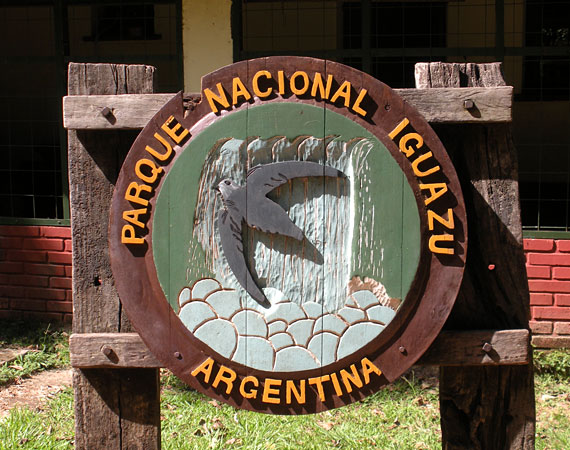
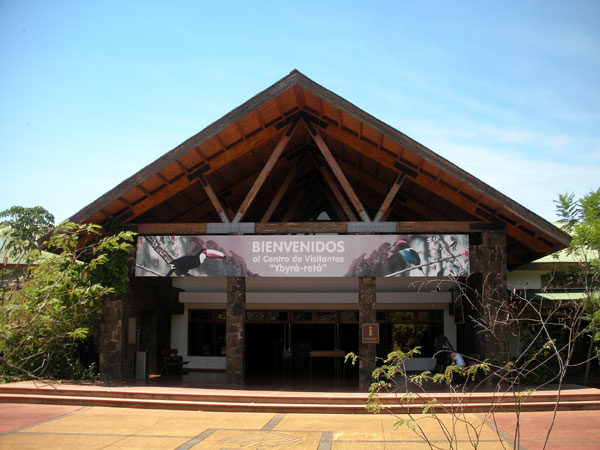
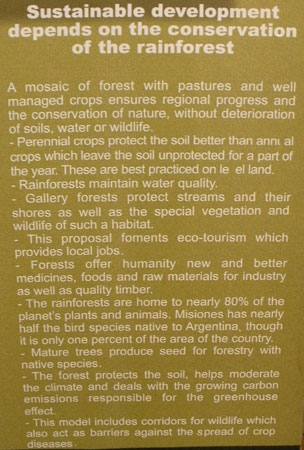
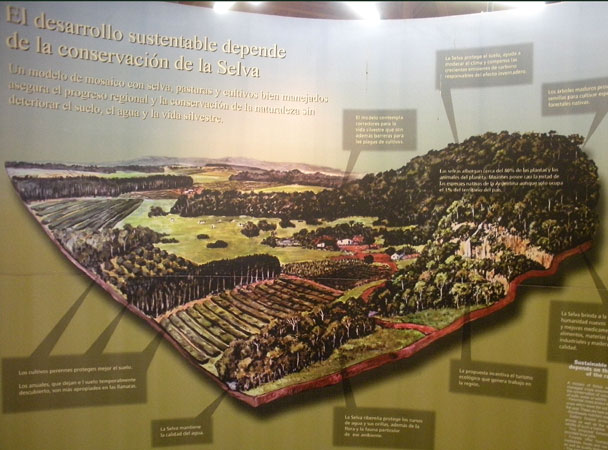
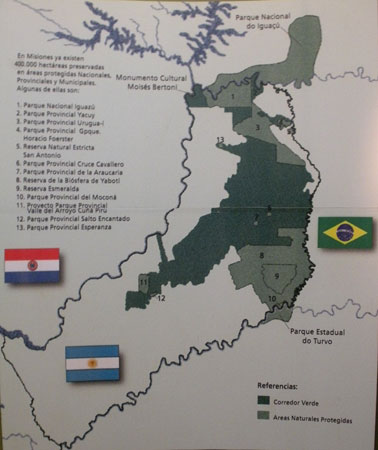
Map of Iguazu Falls
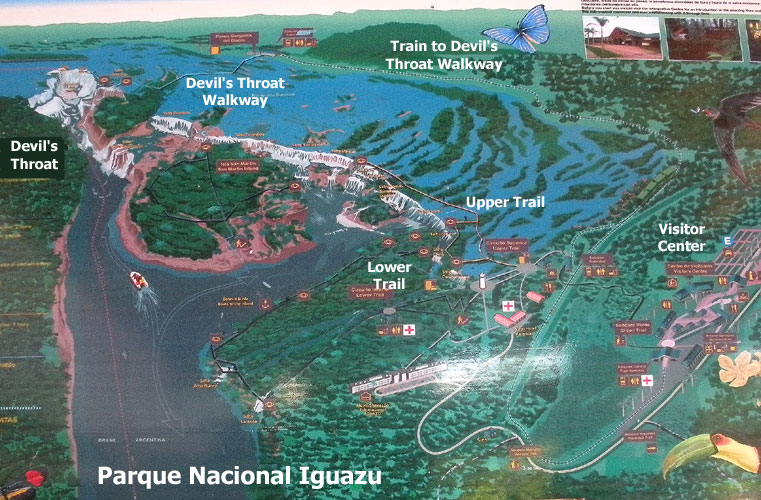
From there, a small train took us out to the place where the Rio Iguazu flows broadly and inexorably toward the great sweep of the falls. We walked on the Devil's Throat Walkway, a long bridge across many flows making up the broad rio, toward the great cloud of mist rising from the Garganta del Diablo (Devil's Throat) ahead.
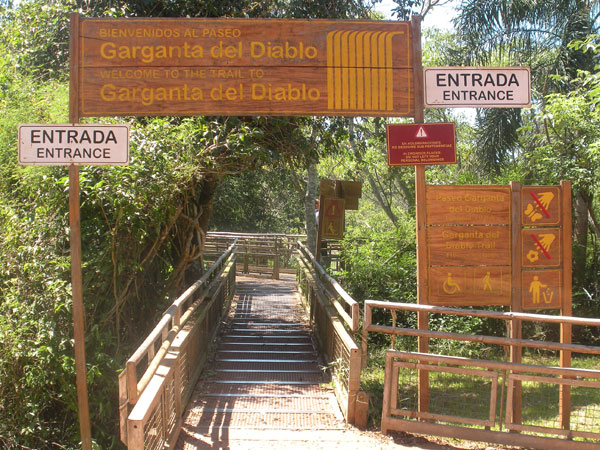
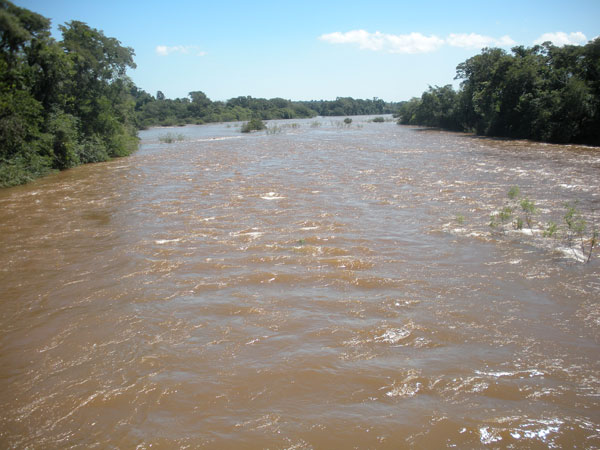
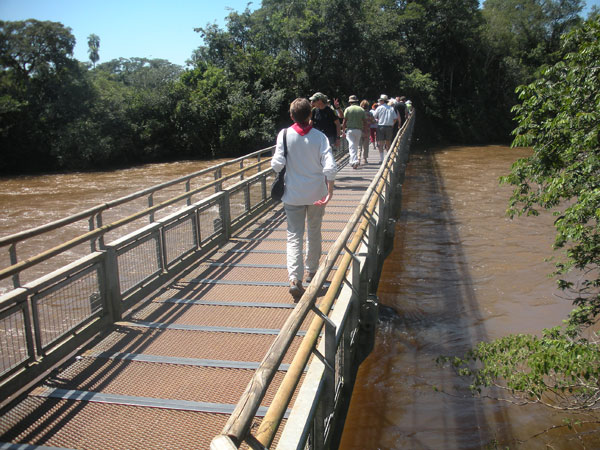
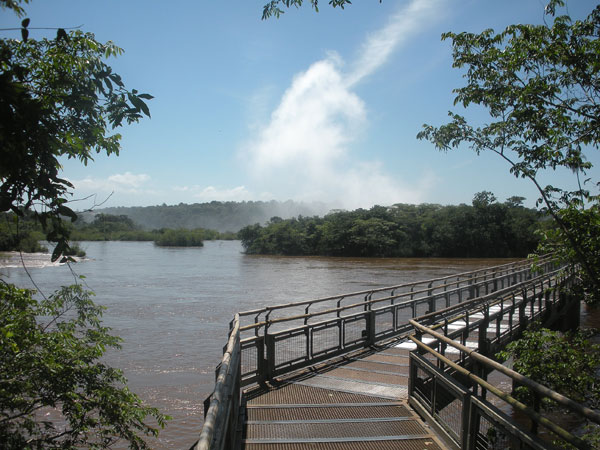
As we approached closer, the foaming edges of the falling water came into view.
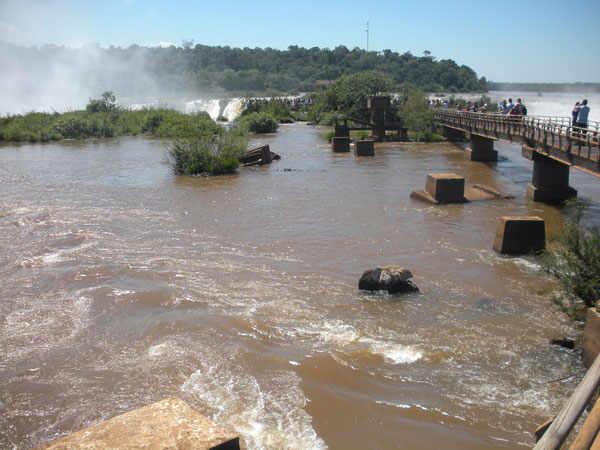
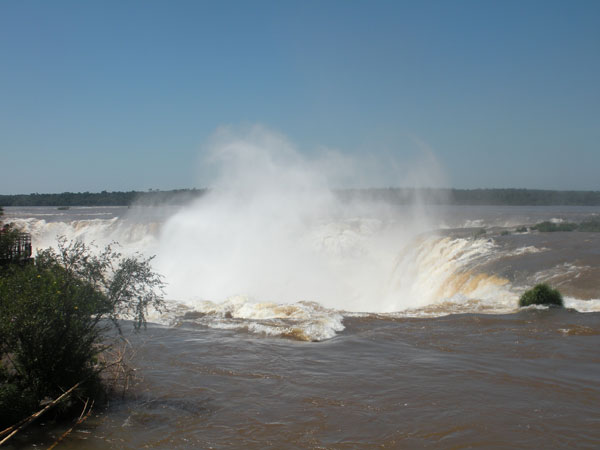
At the edge, we began to appreciate the power, force and energy of the water. Walking closer, the roar drowned out all speech and the mist drenched us like a rain shower.
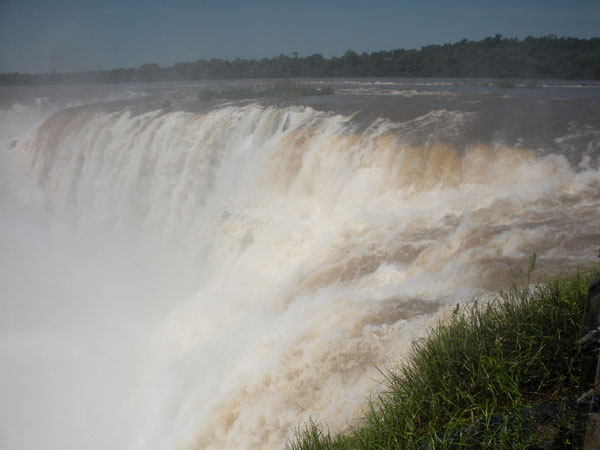
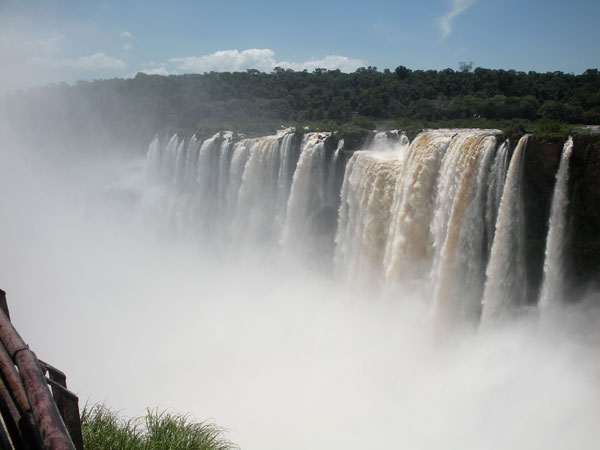
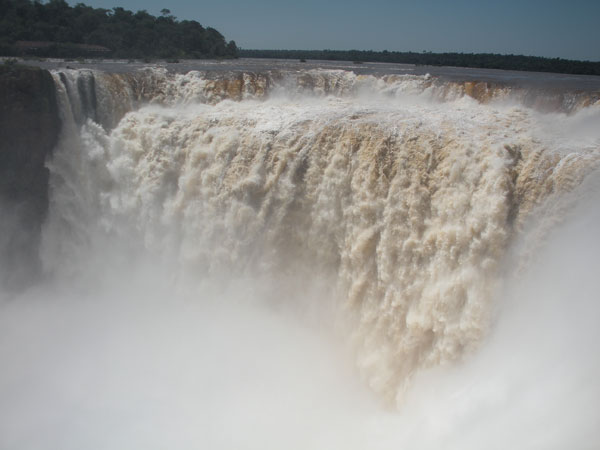
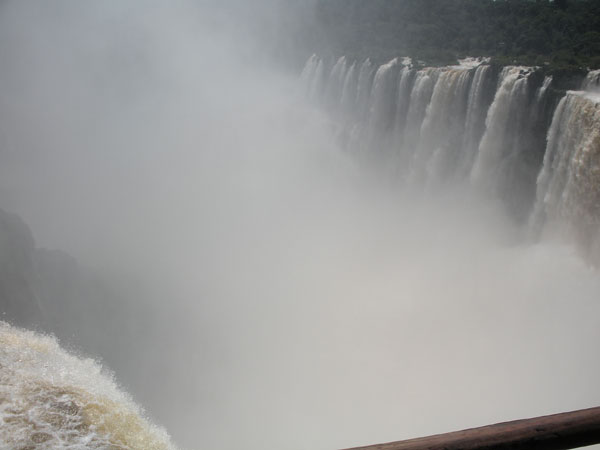
Our trust that the metal deck and bridges, so close to the edge, would hold us up safely was implicit. Finally, with difficulty, we pulled ourselves away from the edge to walk back.
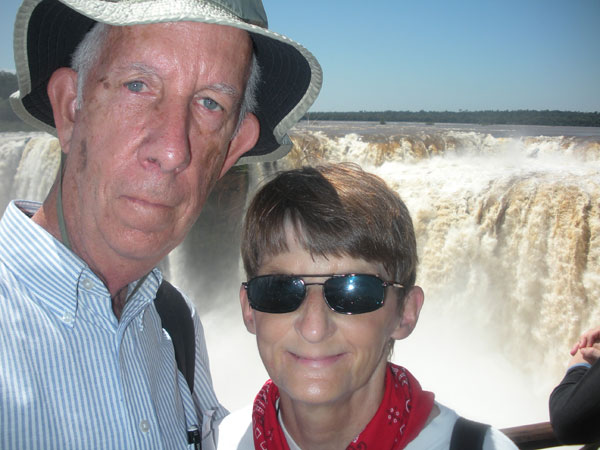
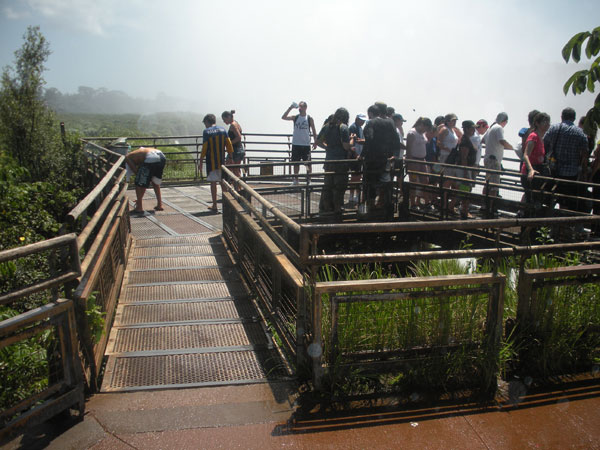
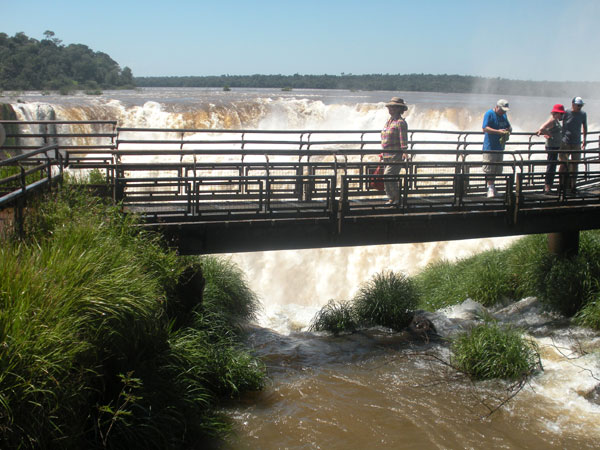
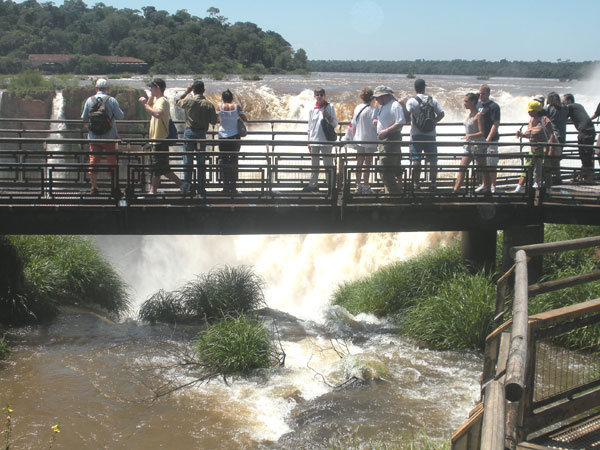
After this first experience, we walked along Paseo Superior (Upper Trail), another long metal walkway that took us along the very edge of a series of falls. We had mighty flows, misty rainbows, and great panoramic views the whole way. Again, there was something compelling and hypnotic, charming and exciting about all this flowing, boiling, plunging water.
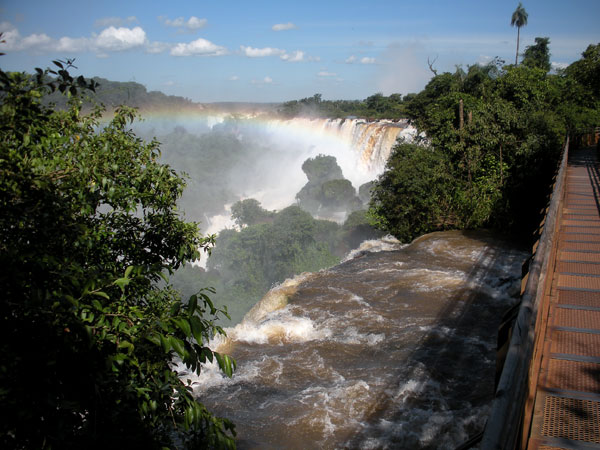
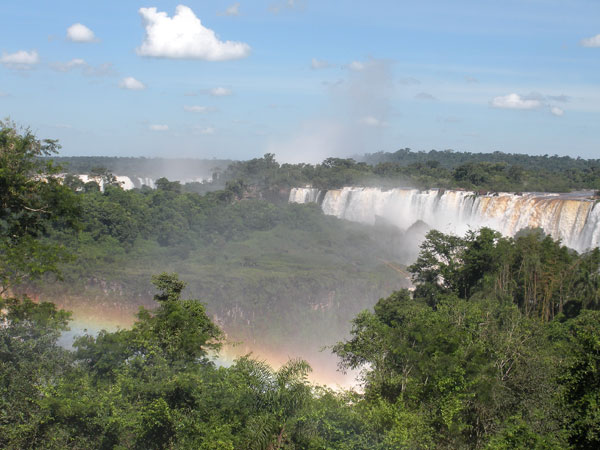
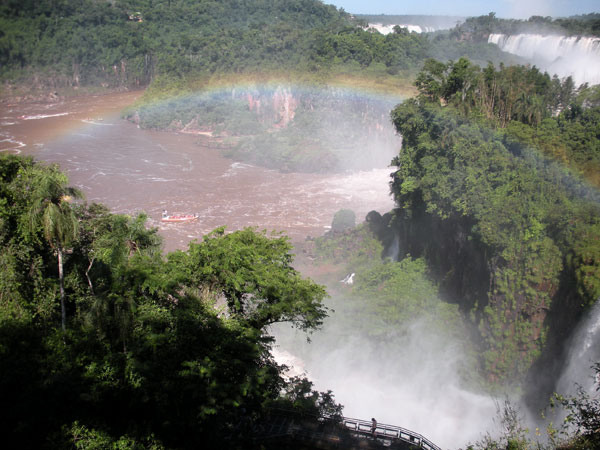
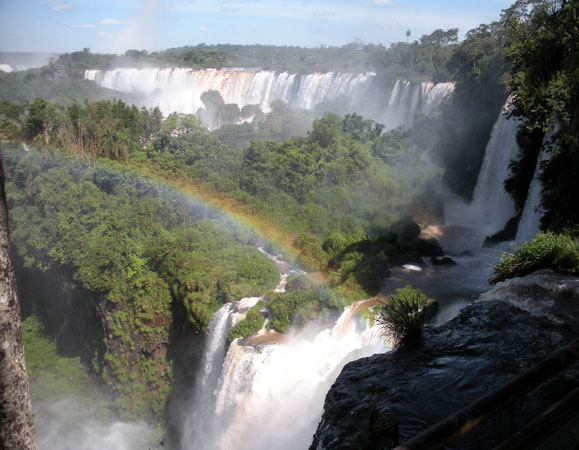
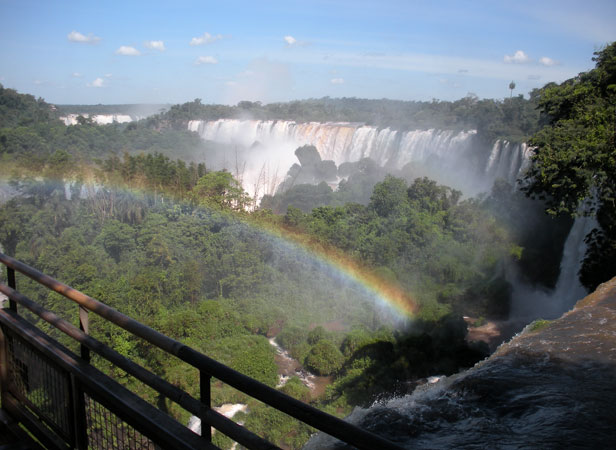
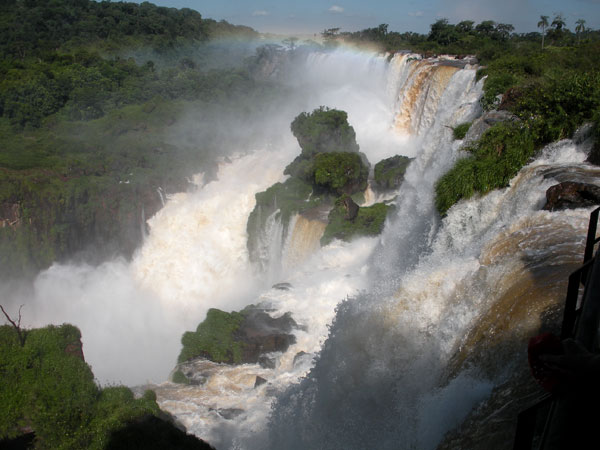
At the end of the day, we rode the bus back to town, feeling overwhelmed by the grandeur of what we had seen and happy that we had planned another day to continue our fluviophilic encounters.
Returning on our second day, we began with a walk along the Sendero Verde (Green Trail) through the selva, and then down steep steps to the Paseo Inferior (Lower Trail) about halfway down to the level of the lower rio. From here, we had views right into the Devil's Throat. We also watched the little boats full of tourists that braved the ride into the riling foaming water below the falls.
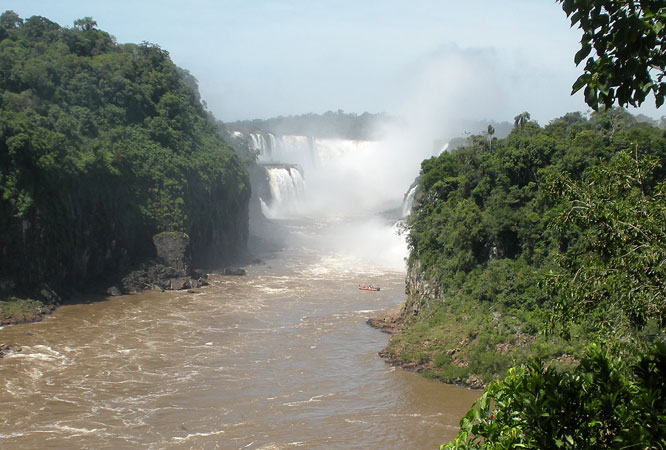
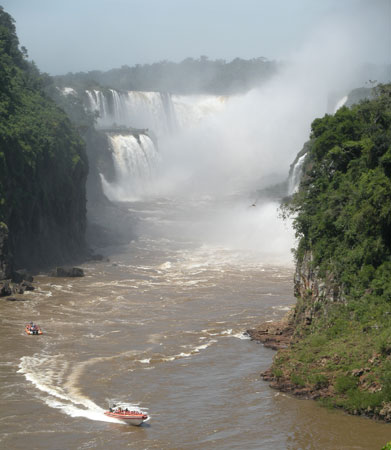
This was not for us, however; the walkway and decks provided more than sufficient opportunities to get up close to the falling waters and mists.
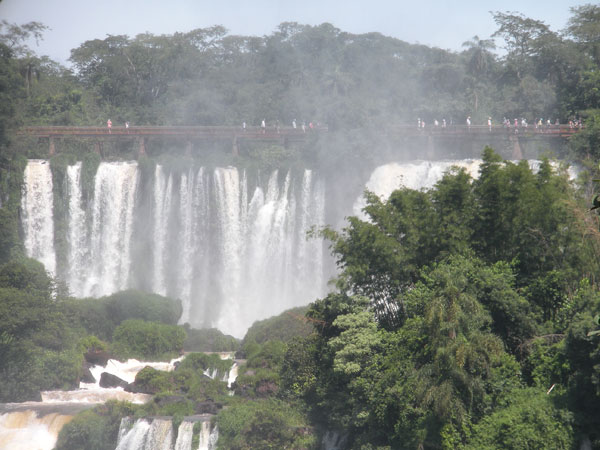
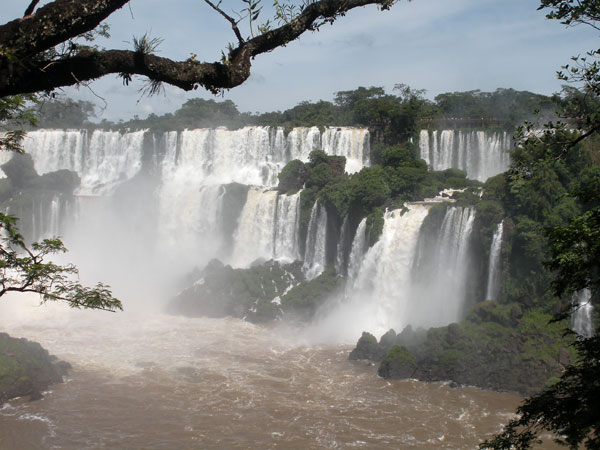
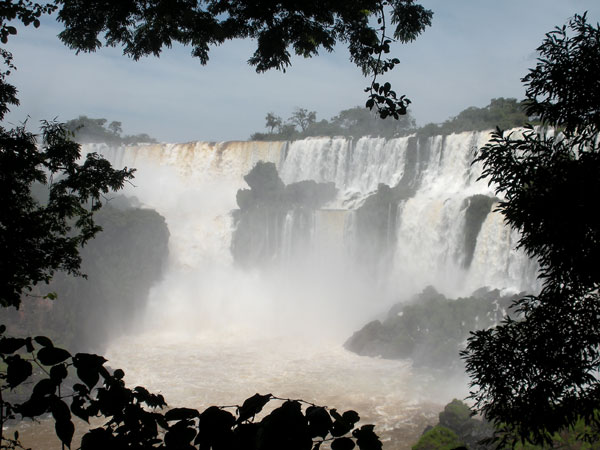
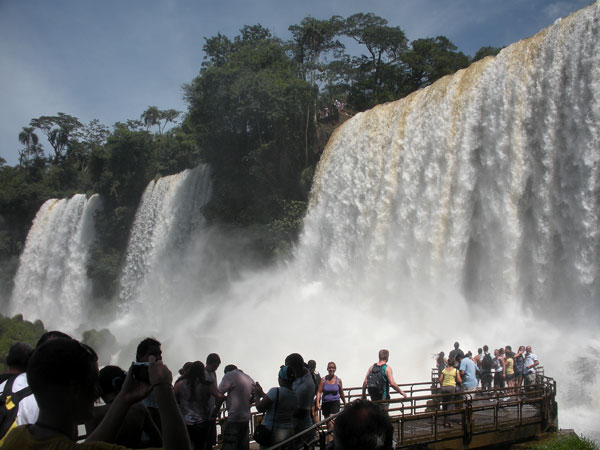
There was still time to walk the Paseo Superior once more, to look down on the Paseo Inferior where we had just been, and to again walk at the fall's edge.
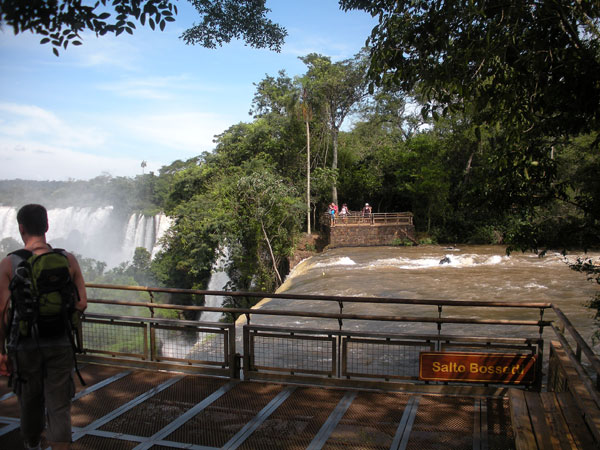
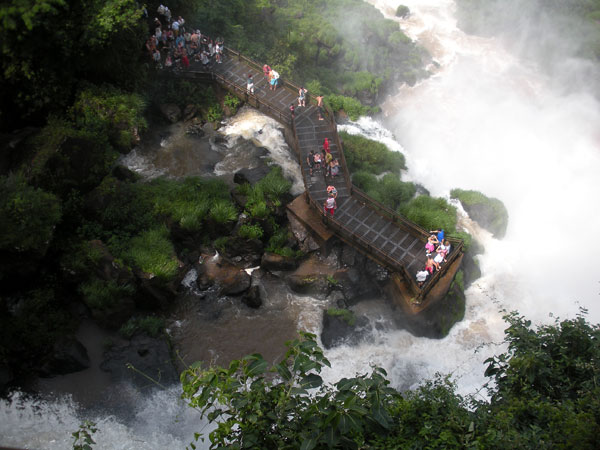
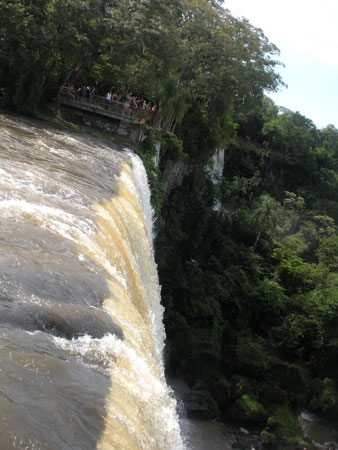
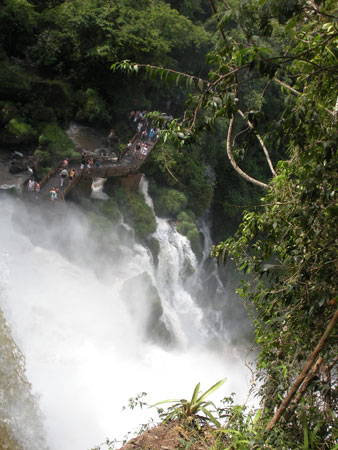
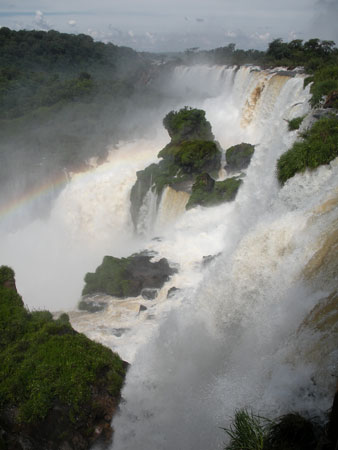
During our walks, we met many critters, the residents of the selva:
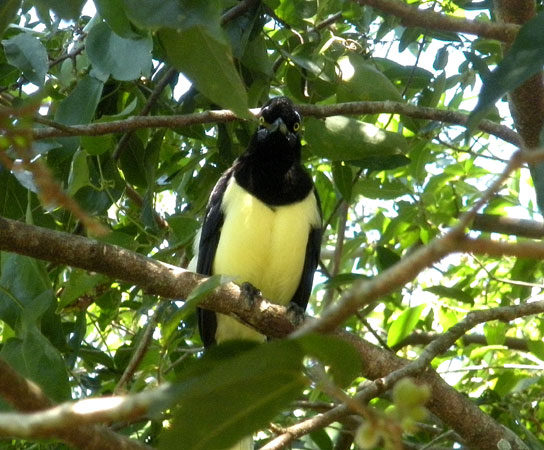
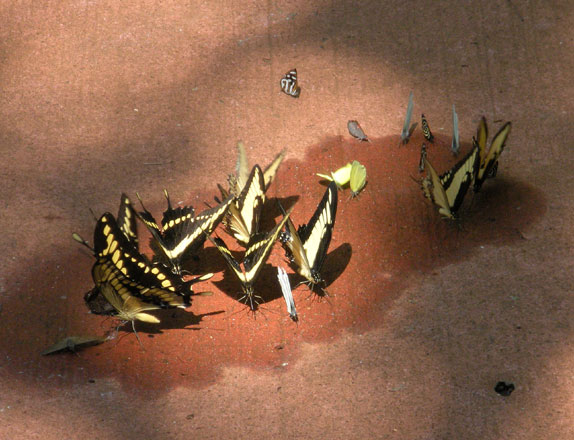
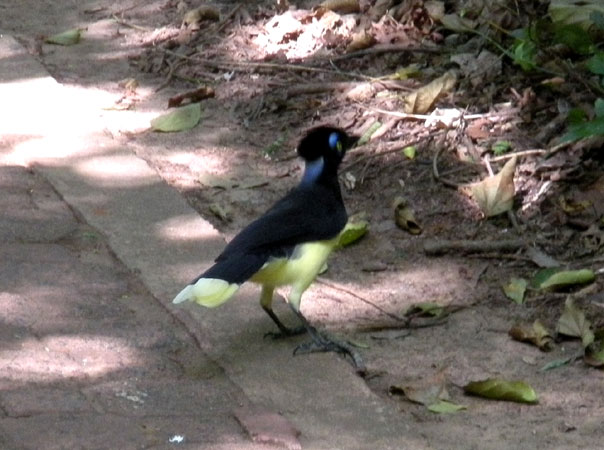
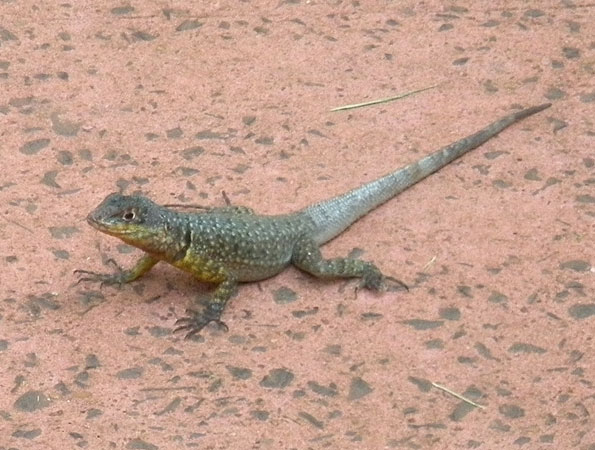
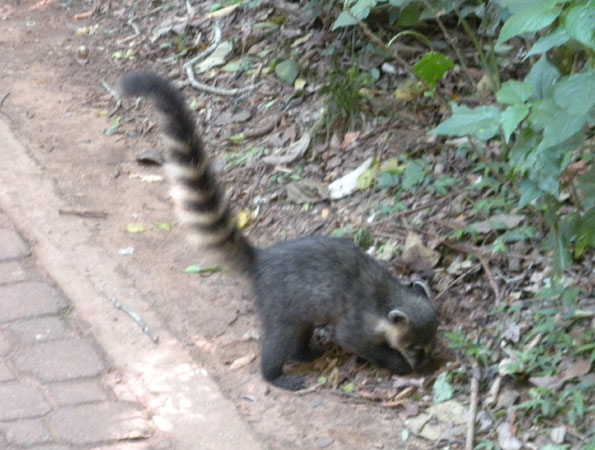
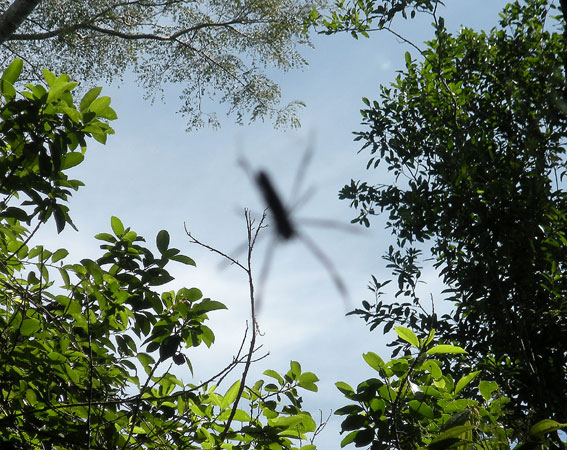
The Argentine government has invested in the visitor infrastructure - kilometers of walkways and bridges, the Centro de Visitantes with excellent interpretation, several complexes of snack and gift shops, enough rest rooms and the train to transport visitors to the farther parts of the parque - to provide a World Class visitor experience!
Of course, it was the Falls - the power of the water - that drew us to this place!
Click here to return to our Central and South America - Spring 2010 page
Click here to return to our Searching the World page
![]()